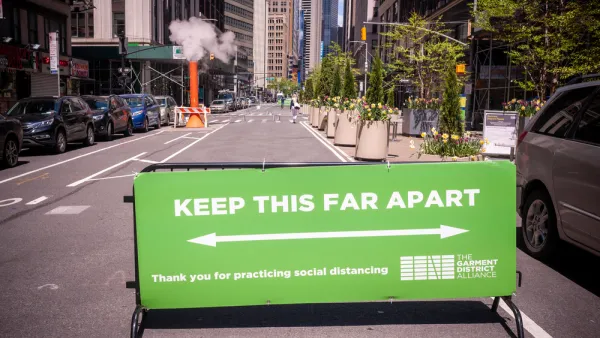The membership of decisionmaking bodies such as planning commissions rarely reflects the socioeconomic, gender, and racial characteristics of the local community.

Who is represented in planning decisions? “Land-use laws influence home prices, class and racial segregation, carbon emissions levels, and labor market efficiency,” making this a key question, write Lydia Lo, Eleanor Noble, Yonah Freemark in a new study for the Urban Institute.
The study analyzed “the racial and gender characteristics, housing tenures, and occupations of land-use decisionmaking board members across 482 jurisdictions and 601 land-use decisionmaking bodies within the 50 largest metropolitan areas in the United States.”
The study found that, by and large, “the people who draft, adjudicate, and implement land-use laws rarely share similar demographics, occupations, or housing tenures as their jurisdiction’s residents.”
The article details the data on representation, noting that “Forty-five percent of land-use boards have a membership that is at least 95 percent white, even though only 5 percent of jurisdictions have such high white population shares.” Additionally, men are overrepresented by more than 20 percentage points, while renters are underrepresented in 99 percent of jurisdictions. Planning and zoning board members also tend to come from planning- or real estate-related professions. “Meanwhile, there are few board members hailing from the food, health care, and retail sectors, and retirees, homemakers, and unemployed people are similarly underrepresented.”
According to the authors, these differences matter because “These results may offer one explanation for why US cities have suffered from decades of inadequate housing construction, low levels of housing affordability, and high levels of segregation.” The authors note that boards that offer supports like child care, compensation, or flexible meeting times are more likely to more accurately represent the local community, and recommend state-level requirements for such accommodations to encourage more representative membership in land use decisionmaking bodies.
FULL STORY: Who Makes Planning Choices?

National Parks Layoffs Will Cause Communities to Lose Billions
Thousands of essential park workers were laid off this week, just before the busy spring break season.

Retro-silient?: America’s First “Eco-burb,” The Woodlands Turns 50
A master-planned community north of Houston offers lessons on green infrastructure and resilient design, but falls short of its founder’s lofty affordability and walkability goals.

Delivering for America Plan Will Downgrade Mail Service in at Least 49.5 Percent of Zip Codes
Republican and Democrat lawmakers criticize the plan for its disproportionate negative impact on rural communities.

Test News Post 1
This is a summary

Test News Headline 46
Test for the image on the front page.

Balancing Bombs and Butterflies: How the National Guard Protects a Rare Species
The National Guard at Fort Indiantown Gap uses GIS technology and land management strategies to balance military training with conservation efforts, ensuring the survival of the rare eastern regal fritillary butterfly.
Urban Design for Planners 1: Software Tools
This six-course series explores essential urban design concepts using open source software and equips planners with the tools they need to participate fully in the urban design process.
Planning for Universal Design
Learn the tools for implementing Universal Design in planning regulations.
EMC Planning Group, Inc.
Planetizen
Planetizen
Mpact (formerly Rail~Volution)
Great Falls Development Authority, Inc.
HUDs Office of Policy Development and Research
NYU Wagner Graduate School of Public Service





























